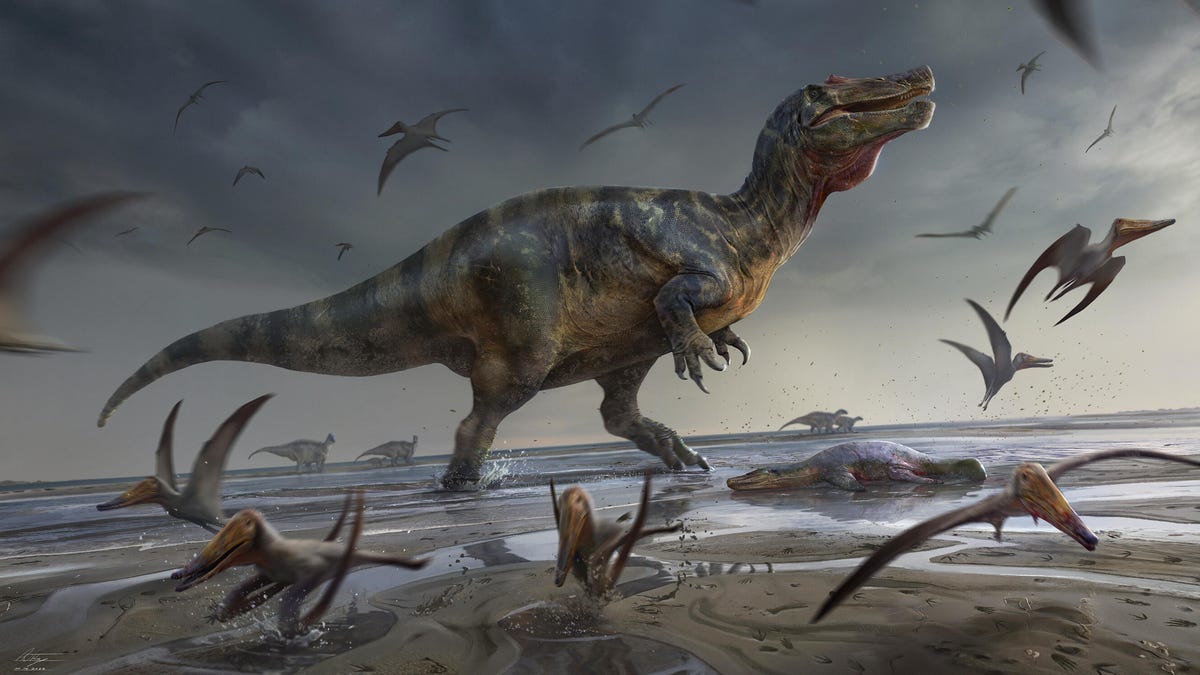Huge Croc-Faced Dinosaur Discovered: 'Europe's Largest Land Predator'
I like big dinos and I cannot lie.
Let's dial back time to 125 million years ago. A 33-foot-long (10-meter-long) crocodile-faced dinosaur prowled across what's now England's Isle of Wight. If you were a prey animal at that time and you came across that spinosaurid, you'd have thought, "Oh, hell no."
The "White Rock spinosaurid," named for the geological layer in which it was found, was identified from fossils of its massive pelvic and tail vertebrae, along with a few other dino fragments. A team led by researchers at the University of Southampton published a study on "Europe's largest land predator" in the journal PeerJ this week.
"Judging from some of the dimensions, it appears to represent one of the largest predatory dinosaur ever found in Europe -- maybe even the biggest yet known," said study lead Chris Barker in a University of Southampton statement on Thursday. "It's a shame it's only known from a small amount of material, but these are enough to show it was an immense creature."
This graphic shows the position of the best-preserved fossil bones from the White Rock spinosaurid.
Because the researchers unearthed so few of its dino parts, the fossilized critter hasn't been given a formal scientific name. So that means no heavy-metal Latin translations like "meat-munching face-melter" or "bone crusher." Paleontologists hope to uncover more pieces of the dinosaur.
The bones tell a story of what happened after the animal's death. One of the pelvis pieces showed signs of having been bored into by beetle larvae. "It's an interesting thought that this giant killer wound up becoming a meal for a host of insects," said study co-author Jeremy Lockwood, a doctoral student at the University of Portsmouth and Natural History Museum.
England's Isle of Wight is a place that's delivered a bonanza of fascinating fossils, including a T. rex cousin, some new species of spinosaurids and a velociraptor relative that likely climbed trees. The White Rock spinosaurid probably got its feet wet while living at a time when sea levels were rising.
The team intends to take a closer look at the dino's bones to work out its age and growth rate and reveal more of the impressive predator's secrets. If more of it turns up, it may even get a full name.


